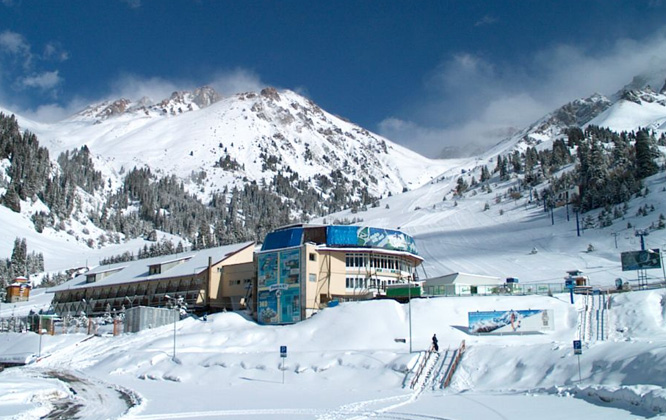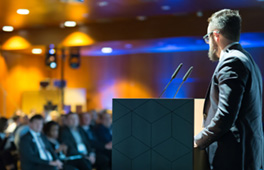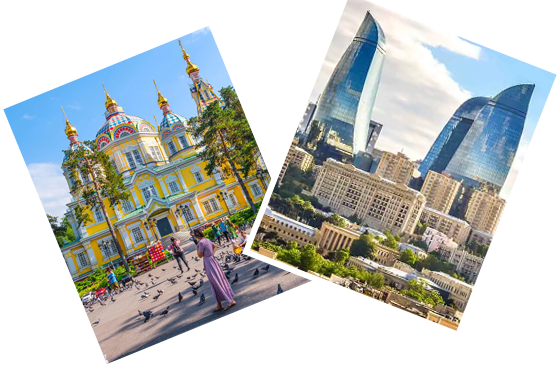
Choose your perfect travel experience
Browse our curated collection of travel destinations worldwide


Discover extraordinary travel experiences and activities

Wander Through Culture and Nature: Best Places to Visit in Bulgaria
Dramatic mountains rival the sun-kissed beaches, the castles stand cheek by jowl with the forts and many museums, while the cities buzz with nightlife, art and culture. Within this fascinating blend of nature, history and modern lifestyle, an unforgettable adventure at Bulgaria tourist attractions is guaranteed. The bold and beautiful Bulgaria is tucked in the Balkans along the coast of the Black Sea and possesses beautiful cities and resort towns that have been luring travellers with their distinctive charm. Whether you are walking over the cobblestone streets while ducking into the museums, taking in the pleasure of picturesque backdrops while exploring the cities of Plovdiv and Sofia, hiking the mighty mountains or hitting the various beaches, there are innumerable places to visit in Bulgaria.
No wonder that the versatile land of Bulgaria has so much to offer to the interested explorers and what better place to start your journey than the capital city itself? Sofia, the official capital and the largest city of Bulgaria nestled at the foothill of Vitosha mountain makes for an excellent base to get introduced to the country’s rich culture and history and the same reflects in an eclectic mix of Roman buildings, Ottoman mosques, old churches and Soviet-era relics scattered all across the capital. Start your capital tour with the two of most famous Sofia Tourist Attractions - Aleksander Nevski Church and 10th-century Rila Monastery that draw visitors and pilgrims galore. Continue your day tours to the other Sofia Attractions like St George Rotunda, the oldest building in modern Sofia, Central Bath and Ivan Vazov National Theatre while you spice up your night outs at the bistros, beer houses, restaurants and live music venues available in the city centres. It is indeed one of the cities that never sleep and with a charm that is too hard to overlook, you’ll be convinced to stick around and explore the incredible places to visit in Sofia.
Still wondering why you should visit Bulgaria? Read on and discover the best Bulgaria tourist places you must cover during your exciting trip to the country.

The Monastery of Saint Ivan of Rila better known as the Rila Monastery is the largest and most famous Eastern Orthodox monastery in Bulgaria. It is situated in the southwestern Rila Mountains 117 km south of the capital



The Thracian Tomb of Kazanlak is a vaulted-brickwork beehive tomb near the town of Kazanlak in central Bulgaria. The tomb is part of a large royal Thracian necropolis in the Valley of the Thracian Rulers near their ancient capital of Seuthopolis in a region where more than a thousand tombs of kings and members of the Thracian aristocracy can be found.

Plovdiv is a range of historical sights, Thracian fortresses, encompassing Roman amphitheatres and Bulgaria’s Krum the Fearsome, spreading over seven hills along the beautiful Martisa River. Plovdiv’s nightlife is very lively with parties going on for hours, nights full of jazz, indie and oodles of Balkan beers


It’s one of the oldest buildings in modern Sofia and the heart of ancient Serdica. It was built 300 years ago and it is one of a kid building that’s not had a scratch for such amount of time and well preserved. Throughout all the years, it remains to be a home of great site and civilizations. The place is adorned with detailed medieval frescoes that had been done during the Ottoman’s rule when the church was converted into a mosque.

The Church of St. Sofia is situated in the center of Bulgarias capital.it was originally dedicated to the wisdom of God. It is one of the oldest churches in Sofia and its history is closely related to the history of the city. In fact Sofia is named after this church.The basic cross design of the present basilica with its two east towers and one tower-cupola is believed to be the fifth structure to be constructed on the site and was built during the reign of Byzantine Emperor Justinian in the middle of the 6th century (527-565). It is thus a contemporary of the better-known Hagia Sophia church in Constantinople. Fragments of the mosaics from an older structure which found underneath the current church were discovered during archeological excavations. During the Second Bulgarian Empire (spanning the 12th to 14th centuries) the structure acquired the status of a metropolitan church. In the 14th century the church gave its name to the city. In the 16th century during Ottoman rule the church was converted into a mosque the original 12th-century frescoes were destroyed and minarets were added. In the 19th century two earthquakes destroyed one of the minarets and the mosque was abandoned. Restoration work was begun after 1900.

The Ivan Vazov National Theatre is Bulgaria’s oldest as well as its national theatre. It’s located in the centre of the city and was founded by the artist from Salza I Smyah Company in 1904. Earlier, the theatre was only named National theatre. In 1923, the building was heavily damaged by a fire during an anniversary celebration. But, in 1929, it was reconstructed by a German architect, Martin Dulfer


The St. Alexander Nevsky Cathedral is a Bulgarian Orthodox cathedral in Sofia the capital of Bulgaria. Built in Neo-Byzantine style it serves as the cathedral church of the Patriarch of Bulgaria and it is believed to be one of the 50 largest Christian church buildings by volume in the world. It is one of Sofias symbols and primary tourist attractions. The St. Alexander Nevsky Cathedral in Sofi

Sveta Nedelya Church is an Eastern Orthodox church in Sofia the capital of Bulgaria a cathedral of the Sofia bishopric of the Bulgarian Patriarchate. Sveta Nedelya is a medieval church that has suffered destruction through the ages and has been reconstructed many times. The present building of the temple is among the landmarks of Sofia. It was designed by the famous Bulgarian ar

The Plovdiv Regional Historical Museum is a historical museum in the city of Plovdiv Bulgaria. Established in 1951 it covers the history of Plovdiv from the 15th century until today. It has three departments each occupying a separate historic building.

The Church of St Constantine and Helena is a church in Plovdiv Bulgaria. It is considered to be among the oldest churches in the city. It was built in 337 at the sight of an ancient pagan temple in the acropolis on one of the fortified hills. The church was named

The Plovdiv Regional Ethnographic Museum is a museum of ethnography in Plovdiv Bulgaria. Since 1938 it has occupied the 1847 house of the merchant Argir Kuyumdzhioglu in the citys Old Town. The museum features six exhibitions each occupying a separate room.

Bansko is one of the most visited places in the country, though it is more popular as a winter sports destination. With numerous expansions the ski fields of Shiligarnika and Chalin Valog make their home in between the fir forests

Pirin National Park is like no other in Europe, as it is tagged by UNESCO and rises like a great Balkan Bulwark against the boarders of Greece and Macedonia. Bears and deer stalk the woodlands even today, with wild goats aplenty. The Pirin National Park is Bulgaria’s national treasure which is home to glacier lakes, forests, ridges and peaks. There are many rare species found in the National Park that hides out in the Balkan mountain range and roams the slopes such as wolves, bears, jackals etc. The park also has numerous trekking, cycling, hiking tracks among the alpine meadows

The theatre is one of the best places to visit in Bulgaria that has been well preserved. It is located on the southern slope between Dzhambaz and Taksim. It was discovered by an archaeologist from Plovdiv and reconstructed in the 20th century. It has about 28 concrete rows of marble seats surrounding the whole arena. The theatre is used for many different performances, but in the past, it was used for hunting, gladiatorial games and was the seat of the Roman province too.

Nessebar is an ancient city which is located on the Bulgarian Black Sea Coast. It’s often known as “Pearl of the Black Sea” as it shimmers like a chunk of pearls. The city has deep-rooted significance as it was ruled by the Byzantine Empire. The city consists of two divisions which is the boast of its ancient ruins and the new one is a modern town consisting of hotels and restaurants etc

One of the few things to do in Bulgaria is to visit the sunny beach. The beach is known for its sandy long to soft beaches that flow into the Black Sea. There are numerous visitors who visit the beach and spend time to soak up the sun and taking a swim. The beach is very clean and well preserved from many elements

The Tsarevets Fortress is a pride for Bulgaria’s rich historical greatness. It was built on the area where it used to be a palace of tsars. Explore and see the old ancient ruins and lay on remains of over 400 houses and churches. The fortress was built above a great sea level in order to preserve the kingdom from any kind of invasion.

The tomb was discovered in 1982 and it’s believed to have been built for a royal couple which dates back to the 3rd century. It is one of Bulgaria attractions which have been well preserved by the country. There are amazing interiors which reveals impressive murals and carvings of half-plant females’ figures on the ceiling of the tomb

The Vitosha Mountain has thick mountain peaks and pine forests which are a popular destination for picnics, day hikes and skiing. For things to do in Sofia there’s no better place to spend a nice activity in the mountains. It promises more adventure than you can imagine and the easiest way to reach here is through Aleko, the mountain ski resort

Buzludzha Monument was built in 1974 by the Bulgarian army was a great masterpiece of the Soviets. It was an icon of brutalizing design by many artists in charge of the statues during that time. This monument stands right on the area where it was a battlefield between the Bulgarians and the Turks. Now this place is covered in political graffiti and has become quite an unusual attraction in Bulgaria

Koprivshtitsa is a historic town known for its folk music festivals and architecture. It’s one of the best places to visit in Bulgaria as it’s become a very popular tourist holiday destination. The town boasts of its numerous architectural monuments which are mostly still restoring their original appearance. There are many stories on how the town found, one was a crossroads to town Pirdop, Ziatarica and another tell us that it was founded by refugees.

Sofia’s grand architecture dates back to the 1880s and the interior scale of this cathedral are breathtaking. It’s the second largest cathedral in the Balkan region giving room for 10,000 people inside the cathedral. The cathedral was built straight after the Ottomans were overthrown. It was a monument of dedication to the Russian soldiers which helped in the cause of this liberation

Vitosha Boulevard is one of the fanciest streets in the city where all the fashion houses and boutiques are laid and clustered. It’s not just a street to shop, but also a place for tourists to see arresting views of the Vitosha Mountains which is covered in snow throughout the year.

It’s the second oldest church in the capital city dating back to the 4th century. The church was built on several other places. During the 2nd century, it was the site for Roman theatre and in the next few decades, many other churches were also constructed but later destroyed by the Goths and Huns. Inside the church, there are remnants of this church and tombs which dates back from 1500 years ago

The Boyana Church is a medieval church located on the outskirts of Sofia. In 1979, it was added the list of UNESCO World Heritage Site and became one of the top places to visit in Sofia. The church looks very dreamlike place as it’s tugged in a grove of tall soft trees in a quiet suburb city

The National Institute of Archaeology is an archaeological museum located in the capital city of Bulgaria. It occupies the building formerly known as Koca Mahmut Pasa Camil. The museum was officially opened in 1905 and since then it’s become Sofia tourist attractions. It houses some of the best collections in prehistory hall, treasury, main hall and medieval section

The National Historical Museum is the largest museum in Sofia which was founded on 5 May 1973. The museum currently contains 650,000 objects related to history, fine arts, archaeology, and ethnography. There’s also a library, cafe, cloakroom and a souvenir shop. The collections in this museum date back to prehistoric times up to modern day.

Borisova gradina is one of the oldest parks in Sofia making it Sofia attractions after the Bulgarian revival. It was constructed in 1884 and named after Bulgarian Tsar Boris III. It embraces three periods under the name the Alsatian Joseph Frei, the Swiss Daniel Neff, and then the Bulgarian Georgi Dutev.
Testimonials
"Our trip with Dook International was just fantastic. We learnt about Vietnam history and culture. We have also tried delicious food of Vietnam and indulge in different adventures…”
Dr.Ramesh Keval chand

Ready to venture out into the world? Fill the form below and start your brand new journey with us

